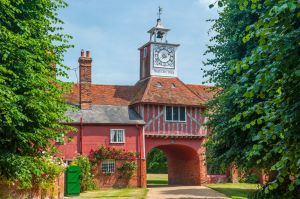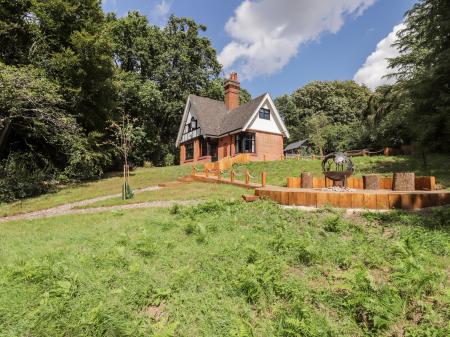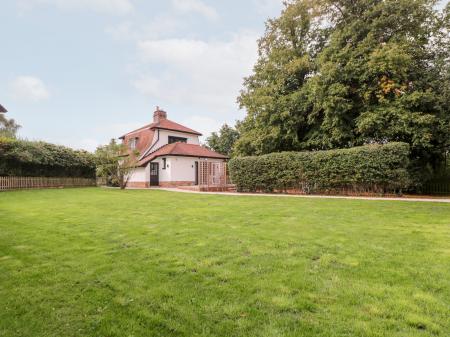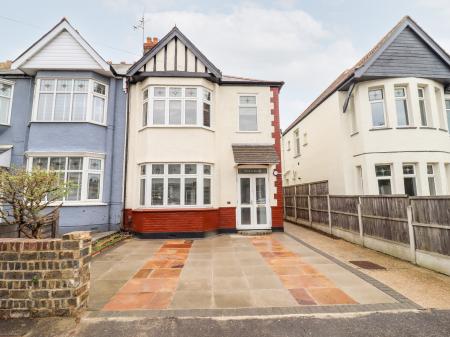
Among the rooms on view to visitors are the Summer Parlour, which was the former ballroom. The old Great Hall was lost when the west wing was demolished, but this has been replaced by an oak-panelled Stone Hall. The Old Kitchen features a huge Tudor fireplace.
There are two bedchambers to visit; the room known as 'My Master's Lodging' is a typical Tudor chamber with a carved four-poster bed. Contrast this chamber with the Queen Anne Room, which is furnished in ornate 18th-century style.
Finally, there is a Long Gallery, which, as its name suggests, is a long hallway, lined with portraits and mementoes gathered by generations of the Petre family. There are also 2 secret Priest's Holes, or hiding chambers, set into the thickness of the walls.
History of Ingatestone
The estate of Ingatestone dates to at least the 10th century when King Edgar granted land here to nuns of Barking Abbey. When Henry VIII began the process of dissolving monasteries in the 1530s, a young lawyer named William Petre was commissioned to visit all the monasteries in southern England.
Petre was smitten by the manor of Ynge-atte-Stone, and when the manor became available after Barking Abbey was disbanded in 1539 Petre purchased the estate - at full market value, which was somewhat unusual at a time when other royal officials were taking advantage of their positions to buy monastic estates for a fraction of their real value.

Interestingly, Petre applied for and was granted a Bull of Confirmation from the Pope, exempting him from the excommunication aimed at Henry VIII, and exonerating him from suspicion of plundering church property - providing he established almshouses for the poor.
This he did, and the almshouses still stand on Ingatestone High Street. Petre tore down the steward's house of the abbey and built a new manor, which is essentially the building we see today.
Petre and his wife were both staunch Catholics, so his caution in obtaining the Pope's pardon is understandable. what is perhaps less understandable is how the Petre family managed to avoid the unpleasant fate that befell many Catholic families over the ensuing centuries.
Despite remaining true to their faith through the religious turmoil of the Reformation and its aftermath, the Petres remained in good standing with the crown and received royal visits on several occasions.
Petre rose to serve as Secretary of State for 4 monarchs, including Henry VIII, Edward VI, Mary I, and Elizabeth I. Elizabeth stayed at Ingatestone in 1561 on one of her endless royal progresses. What is remarkable is that the Petre family kept royal favour even after a priest staying at Ingatestone was betrayed to the authorities in 1582.
St John Payne was ostensibly a steward at Ingatestone, but in reality, he was a Catholic priest, kept by the Petre family to say Mass in the family chapel at a time when Catholic practise was illegal. Payne was betrayed by someone at Ingatestone, and executed, yet the Petre family escaped punishment.
Later generations of the Petre family favoured another of the family properties at Thorndon Hall, but a fire that gutted Thorndon in 1878 made Ingatestone the preferred family seat again. In the late 18th century the west wing, containing the original Great Hall, was pulled down, and much of the remainder was divided into smaller apartments. However, extensive restoration following WWII has restored Ingatestone to its original Elizabethan grandeur.

Visiting Ingatestone
There is a small parking area just outside the main gates to the Hall, and from there a level walk takes you up the long drive to the striking gatehouse, topped with a clock tower. The motto inscribed below the clock is a reminder of the Petre family's tradition of Catholic faith; 'Sans Dieu Rien' (Nothing Without God).
On either side of the clocktower are brick buildings that predate the Hall itself. You pass through the gatehouse into a wide gravelled area to an open courtyard, with projecting wings on either side of a main block. This area would have originally been fully enclosed, but the west wing, as noted, is long gone.
When we visited, the only way to see the house was by a timed tour, though there are occasional 'free-flow' days. The tour was excellent, however, with the guide giving our group plenty of background information about the family and the history of the house - as well as telling us about the resident ghosts said to haunt areas of the house and grounds.
We saw a series of wonderful period rooms on the ground floor, including two priest holes, or hidden chambers. Then we visited several bed-chambers on the first floor, and the long gallery, which is filled with a mini-museum of family treasures and memorabilia. After our visit, we were free to wander around the informal garden area behind the house, including the Lime Walk and small walled garden.
I found Ingatestone an absolute delight. The staff were incredibly friendly and helpful, the guided tour was fascinating, and we very much enjoyed the house, with its richly panelled rooms and Tudor furniture throughout. There were also pieces of later Georgian furniture and art brought to Ingatestone after the fire at Thorndon, so that the interiors have a bit of a split-personality mixing Elizabethan dark oak with elegant Georgian gilding and delicate woodwork.








 We've 'tagged' this attraction information to help you find related historic attractions and learn more about major time periods mentioned.
We've 'tagged' this attraction information to help you find related historic attractions and learn more about major time periods mentioned.


